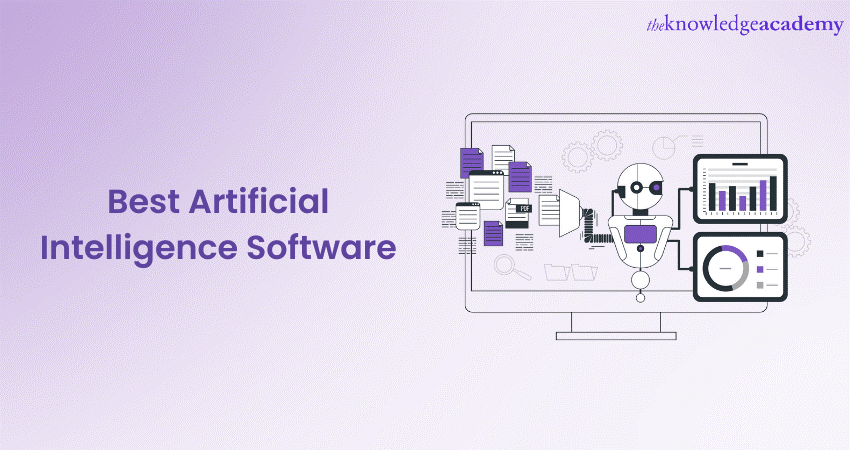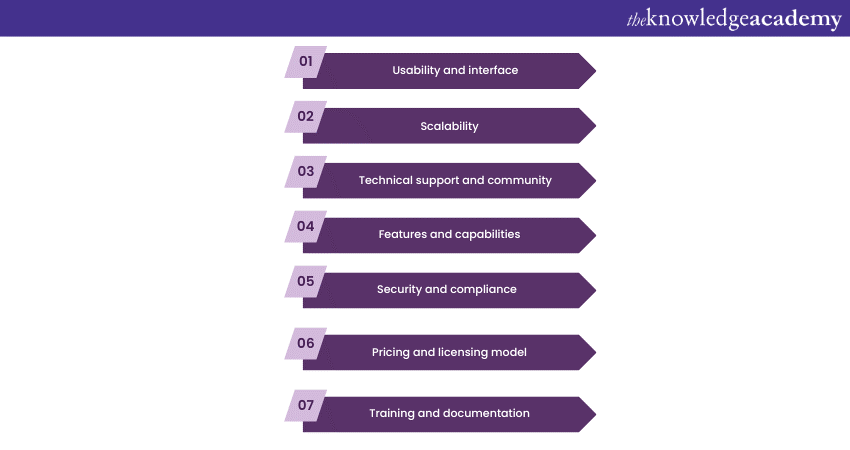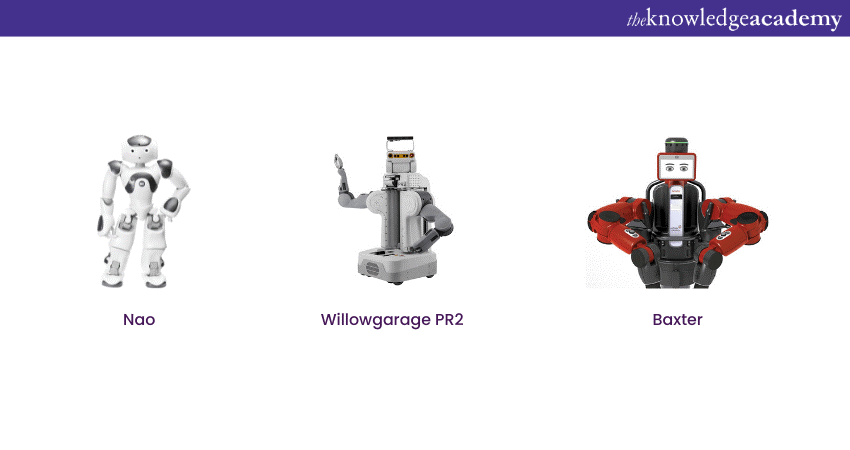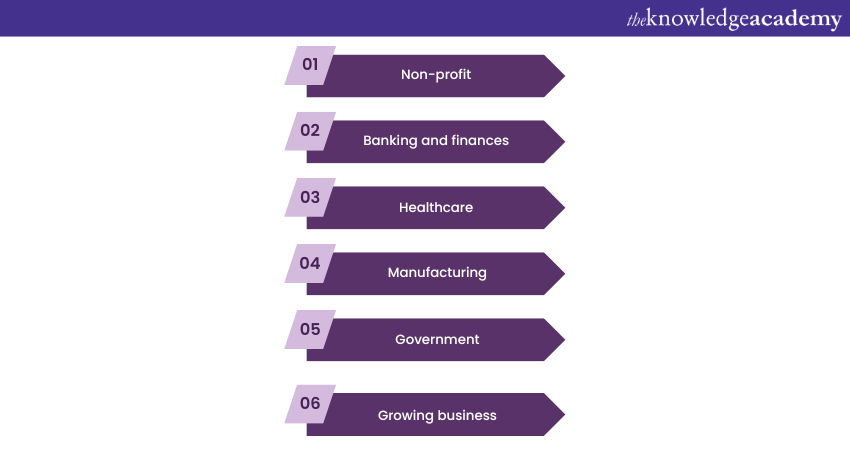We may not have the course you’re looking for. If you enquire or give us a call on +353 12338944 and speak to our training experts, we may still be able to help with your training requirements.
Training Outcomes Within Your Budget!
We ensure quality, budget-alignment, and timely delivery by our expert instructors.

2024 is a year where dreams take the shape of reality, and Artificial Intelligence (AI) is the artist behind the masterpiece. Imagine software that knows your next move in business before even you do, or a virtual assistant who's more than just lines of code, understanding and growing with you. AI's footprint is unmistakable in the bustling factories, in the quiet corners of research labs, and even in the melodies of a song.
AI is more than just a data processor; it engages in natural conversations, understands context, and even devises cancer treatment plans. Software today isn't merely functional but empathetic and innovative too. Through this blog on Artificial Intelligence Software, we will learn about the best AI software and help you choose the right one for your organisation.
Table of Contents
1) What is the Best Artificial Intelligence Software?
2) Examples of the Best Artificial Intelligence Software
3) Creating Artificial Intelligence Software
4) Top picks for 2024
5) Conclusion
What is the Best Artificial Intelligence Software?
Selecting the Best Artificial Intelligence Software is a complex task that depends on numerous factors. From businesses looking to automate tasks to developers building the next big thing, the choice of software plays a critical role. Therefore, it is important to explore the criteria for selecting the Best Artificial Intelligence Software and the recent developments that have shaped this dynamic field.
The selection of an AI depends on its ability to perform the specific task required and its alignment with ethical, cost, and technological constraints. Let's understand various factors that play a vital role in selection.

Ready to embark on your AI journey? Learn the fundamentals with Introduction to Artificial Intelligence Training at The Knowledge Academy today!
Usability and interface
User-friendly design: Easy-to-use interfaces are essential to appeal to a broad range of users, from AI experts to beginners. Guided workflows, drag-and-drop features, and a clutter-free design enhance user experience.
Customisation: The option to personalise interfaces or workflows caters to unique project needs and individual preferences. This includes widget customisation, dashboard configurations, and the ability to create custom algorithms.
Scalability
Growth accommodation: The capacity to handle increasing complexity is key. Whether it's larger data sets or more intricate algorithms, the software should grow with your needs.
Integration capabilities: Seamless integration with existing systems and third-party tools allow for adaptable solutions. Integration with Cloud Services, Databases, or other AI Platforms ensures uninterrupted scalability.
Technical support and community
Support channels: Robust support, available 24/7, ensures issues are addressed promptly. This includes live chat, forums, dedicated support agents, and extensive FAQs.
Active community: Community forums, blogs, GitHub repositories, and social media groups foster collaboration, knowledge sharing, and provide real-world insights and solutions.
Features and capabilities
Range of tools: A rich feature set covering data preprocessing, algorithm selection, model training, and evaluation ensures all AI needs are met.
Up-to-date technology: Regular updates, including the integration of the latest algorithms, compatibility with new hardware, and patches for identified issues, keep the software on the cutting edge.
Security and compliance
Data protection: Robust encryption, secure access controls, and frequent security audits protect sensitive data.
Regulatory adherence: Compliance with GDPR, HIPAA, or other local regulations ensures legal requirements are met and can save businesses from potential legal troubles.
Pricing and Licensing Model
Budget fit: Transparency in pricing, availability of free trials, and various Subscription Models (freemium, tiered pricing) ensure alignment with different budget levels.
Licensing flexibility: Understanding the difference between Perpetual Licenses, Subscriptions, or Open-Source Licenses can influence both initial costs and ongoing expenses.
Training and documentation
Comprehensive documentation: Access to user manuals, API Documentation, and code samples provide a detailed guide for all user levels.
Training Modules: The availability of online tutorials, certification courses, and hands-on workshops help users harness the full potential of the software.
Examples of the best Artificial Intelligence Software
Artificial Intelligence Software should be selected based on the specific requirements of a task. Whether for enterprise-level functions or individual projects, the choice depends on the fit between these needs and the AI's capabilities. Here, we'll explore some prominent examples of Artificial Intelligence Software, categorised into enterprise solutions and open-source alternatives.
General-purpose AI platforms
OpenAI: Renowned for models like GPT-3, OpenAI facilitates applications from text generation to complex problem-solving. The recent advancements also encompass multimodal models that combine text, image, and sound processing.
IBM Watson: Watson's multifaceted abilities span across data analysis, predictive modelling, and natural language processing. Its industry-specific solutions have revolutionised fields like customer support and medical diagnostics.
Machine Learning frameworks
TensorFlow: This open-source tool enables the creation and training of various machine learning models. Its vast community support and an extensive library make it suitable for both beginner and expert developers.
Py Torch: Known for its dynamic computation and ease of debugging, Py Torch has become an essential tool for research and experimentation. Its compatibility with other libraries like NumPy adds to its appeal.
Data Science platforms
RapidMiner: From data preparation to advanced analytics, RapidMiner provides a no-code environment, making complex analytics accessible to non-technical users.
KNIME: KNIME's drag-and-drop interface, coupled with a wide array of extensions, caters to various data integration and transformation needs, enabling smooth collaboration between data scientists and business analysts.
Robotics AI
ROS (Robot Operating System): ROS's modular design supports creating everything from hobbyist robots to industrial automation systems. Its global community contributes to continuous updates and innovations.
VPL (Visual Programming Language): VPL simplifies robot programming through graphical representations, enabling education and prototyping without the need for in-depth coding skills
Let's have a look at few other robots that use RIO:

Natural Language Processing tools
NLTK (Natural Language Toolkit): NLTK serves as a comprehensive platform for linguistic data analysis, including functions like classification, tokenisation, and sentiment analysis.
Spacy: Fast and accurate, Spacy's capabilities range from part-of-speech tagging to entity recognition. Its efficiency makes it suitable for large-scale industrial applications.
Specialised industry solutions
Siemens Healthiness: Leveraging AI for medical imaging, diagnostics, and patient care optimisation, Siemens Healthiness plays a crucial role in personalised medicine.
Kuki (Retail): Kuki's AI algorithms offer personalised shopping experiences, employing chatbots and recommendation systems that adapt to individual customer preferences and behaviour.
Emerging and niche tools
Deep6 AI: Focused on clinical trials, Deep6 AI's patient-matching algorithms significantly reduce recruitment time, enhancing the efficiency of medical research.
AIVA (Music Composition): By applying deep learning to music creation, AIVA enables the composition of diverse musical genres, paving the way for AI-generated music in entertainment and advertising.
Unlock the power of AI with our Artificial Intelligence Courses and start transforming your career today!
Creating Artificial Intelligence Software
Understanding the creation process not only aids in choosing the best platform but also empowers users to customise, innovate, and even create new solutions. Now, let's delve into the aspects of creating AI software.
Tools and frameworks
To create Artificial intelligence software, developers require a set of tools and frameworks. Some of the most popular include Keras and Scikit-learn. These frameworks provide prebuilt functions, speeding up the development process and making it more efficient.
Skill sets required
Developing AI solutions requires a unique blend of skills. Knowledge of programming languages like Python, understanding of machine learning algorithms, data pre-processing, and statistical analysis are essential. Collaborative skills and industry-specific knowledge may also be critical, depending on the project.

Design and implementation
The design phase involves planning the architecture, defining the problem, and selecting the appropriate Algorithms and Data. Implementation includes building the model, training it with data, testing it, and eventually deploying it into a real-world application.
Compliance and ethical considerations
AI development must adhere to legal regulations and ethical principles. Privacy laws, bias minimisation, and transparency are paramount. Developers must consider these aspects from the outset to ensure compliance and responsible AI creation.
Open-Source vs. Proprietary Solutions
Choosing between open-source tools, like TensorFlow, and proprietary platforms, like IBM Watson, depends on various factors such as budget, community support, features, and specific requirements. Both paths offer unique benefits and can be suited to different types of projects.
Enhance your project management skills with AI! Explore Artificial Intelligence for Project Managers at The Knowledge Academy now.
Top picks for 2024
Artificial Intelligence has seen an expansion in 2024, offering software solutions that accommodate everything from individual tasks to large-scale enterprise applications. In this section, we'll delve deeper into the top picks for the year, considering aspects such as features, price, scalability, usability, and more.
Software Artificial Intelligence overview
Emerging Technologies introduce cutting-edge concepts shaping the future of AI, including:
1) Quantum Machine Learning: The integration of quantum computing with AI brings unprecedented computation power and potential breakthroughs.
2) Reinforcement Learning: Growing in popularity, this AI technique learns from trial and error, shaping smarter and more efficient models.
3) AI ethics considerations: Tools to identify and mitigate biases and unethical practices within AI models are becoming vital.
Industry-specific solutions
Let us have a look at different sectors where AI plays a very important transformative role:

1) Healthcare: Personalised treatment plans, diagnostics, and patient management are just a few areas where AI excels.
2) Finance: AI in fraud detection, investment strategies, and customer service are transforming the finance industry.
3) Manufacturing: AI-driven predictive maintenance, quality control, and supply chain optimisation are key trends.
4) Government: AI aids in data analysis for policy decisions, automates administrative tasks, and enhances security through predictive analytics, improving public services and governance.
5) Growing business: AI enables personalised customer experiences, automates repetitive tasks, and analyses market trends for data-driven strategies, fostering scalability and competitive advantage.
6) Non-profit: AI assists in donor engagement and fundraising by analysing donor preferences, streamlines volunteer management through scheduling optimisation, and aids in data-driven program evaluation, enhancing the impact of social initiatives.
Accessibility and usability
No-code and Low-code Platforms tools make AI accessible to a broader audience, reducing the barrier to entry.
Security and compliance
Emphasising the paramount importance of data privacy and robust security measures in the new generation of AI software.
1) Data privacy: Ensuring user data confidentiality and complying with regulations like GDPR is paramount.
2) Robust security protocols: AI software now comes with advanced security features to protect against malicious activities.
Comparison table
Here's a detailed comparison of some top AI software for 2023, considering various factors:
|
Software Name |
Features |
Price |
Rating |
Target Audience |
Industry Applications |
|
IBM Watson |
Cloud-based, NLP, Pre-trained |
Subscription |
4.8/5 |
Enterprises |
Healthcare, Finance |
|
Google Cloud AI |
Scalable, AutoML, Integration |
Free/Paid tiers |
4.6/5 |
Developers |
Retail, Manufacturing |
|
TensorFlow |
Open-source, Flexibility |
Free |
4.7/5 |
Researchers |
Academia, Tech |
|
Microsoft Azure AI |
Comprehensive Services, APIs |
Subscription |
4.5/5 |
Businesses |
All Industries |
|
Keras |
User-friendly, Deep Learning |
Free |
4.4/5 |
Beginners/Pros |
Start-ups, Education |
Conclusion
The landscape of Artificial Intelligence software in 2024 is both diverse and specialised. These examples highlight not only the versatility of AI in addressing various challenges but also the innovative strides that continue to push the boundaries. By understanding the landscape of AI software, businesses, researchers, and hobbyists can make informed decisions, leveraging the best tools to innovate, optimise, and lead in their respective fields.
Transform your business analysis with AI expertise. Enrol in Artificial Intelligence (AI) for Business Analysts with The Knowledge Academy today!
Frequently Asked Questions
Upcoming Data, Analytics & AI Resources Batches & Dates
Date
 Introduction to AI Course
Introduction to AI Course
Fri 24th Jan 2025
Fri 28th Mar 2025
Fri 23rd May 2025
Fri 25th Jul 2025
Fri 26th Sep 2025
Fri 28th Nov 2025







 Top Rated Course
Top Rated Course


 If you wish to make any changes to your course, please
If you wish to make any changes to your course, please


